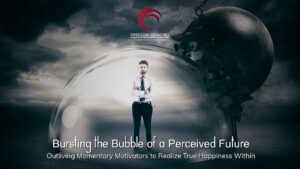The effect of control and its destructive habits are clearly defined in the popular and well-renowned novel ‘1984’ by George Orwell. A few nations secretly controlled their people to serve the one percent wealthy instead of aiming for progress.
Some of the lines from the book set the premise of how people were manipulated by their leaders, therefore, leading them into the darkness of life.
‘They had played a similar trick with the instinct of parenthood. The family could not actually be abolished, and indeed, people were encouraged to be fond of their children, in almost the old-fashioned way. The children, on the other hand, were systematically turned against their parents and taught to spy on them and report their deviations. The family had become in effect an extension of the Thought Police. It was a device by means of which everyone could be surrounded night and day by informers who knew him intimately.’ Thought Winston (the protagonist).
In “1984,” the protagonist, Winston Smith, works for the ruling party in a bureaucratic role. The novel vividly portrays the rigid structure and stifling atmosphere of the workplace, where employees are constantly monitored, forced to adhere to strict regulations, and stripped of their personal freedoms. The pervasive surveillance and manipulation by the government lead to a sense of powerlessness and the suppression of individuality.
Such is the effect of something immovable. Imagine refusing to walk out of a burning building because you simply can’t let go of the sentimental items. You can get burned and this is exactly what being an immovable object can be all about. Being rigid like a stone and yet hitting hard against it without the intention to bypass it can create chaos, friction, and a lot of heated arguments. To put it simply, an immovable and stubborn object can create nothing but static immobility.
“The wise man can change his mind; the stubborn, never.”
~Immanuel Kant
Today, I talk about the concept of leadership involved in the act of when an Irresistible Force meets an Immovable Object.
Who is the Irresistible Force here, and who, the Immovable Object?
A leader could be either! In the context of the book 1984, the government chose to be the immovable object. It shows the way the protagonist, Winston perceived and knew how the government functioned.
‘The Patrols might stop if you happened to run into them. “May I see your papers, comrade? What are you doing here? What time did you leave work? Is this your usual way home?” – and so on and so forth. Not that there was any rule against walking home by an unusual route: but it was enough to draw attention to you if the Thought Police heard about it.’
A rigid leader tends to resist change and cling to traditional methods or beliefs. This inflexibility can hinder their capacity to adapt to evolving circumstances, technological advancements, or shifting market trends. As a result, the leader may struggle to make timely and effective decisions, leading to missed opportunities or outdated strategies.
They may also create an atmosphere of fear, where employees feel hesitant to express themselves or take risks. This can lead to reduced morale, disengagement, and a lack of motivation among team members. Employees may become demotivated due to the perceived lack of autonomy or growth opportunities, impacting productivity and overall performance.
Now, looking at the other side of leadership being the irresistible force. It could work positively or negatively, depending on how one utilizes their leadership attributes.
Taking snippets from the Movies, The Dark Knight or Batman Begins, you could see both sides of the coin.
Batman aka Bruce Wayne (Batman Begins): “As A Man, I’m flesh and blood; I can be ignored, I can be destroyed. But as a symbol… as a symbol, I can be incorruptible. I can be everlasting.”
In the Dark Knight trilogy, Bruce Wayne relentlessly strives to bring hope to the people of Gotham. He aims to empower them to overcome the overwhelming crime and chaos plaguing the city. A notable quote from the trilogy emphasizes that Bruce realizes he cannot rely solely on his mortal self to achieve this mission. He understands the need for a lasting symbol that transcends his physical presence, even after he can no longer protect the city. Despite facing significant personal sacrifices, Bruce ultimately succeeds in his endeavor.
On the other hand, the not-so-bright side of being an irresistible force is how the villain played by The Joker portrays it in his conversation with Batman. After finally apprehending The Joker without killing him, he expresses his satisfaction that Batman refuses to take his life. Hanging upside down, he remarks on the clash between an unstoppable force and an immovable object.
Joker: “Oh, you. You just couldn’t let me go, could you? This is what happens when an unstoppable force meets an immovable object. You truly are incorruptible, aren’t you? You won’t kill me out of some misplaced sense of self-righteousness. And I won’t kill you because you’re just too much fun. I think you and I are destined to do this forever.”
Therefore, it is important to find the balance between being rigid and unyielding like a stone and being an unstoppable force.
Flexible leaders with a high SiQ possess the ability to adapt their approach based on the situation, context, and needs of their team or organization. They understand that leadership is not a one-size-fits-all model and that different circumstances require different strategies.
These leaders are open to new ideas and perspectives, actively seek feedback, and are willing to adjust their course of action when necessary. They value collaboration and empower their team members to contribute their unique strengths and perspectives.
By embracing flexibility, leaders can navigate challenges effectively, respond to changing dynamics, and foster an environment that encourages growth and innovation. They strike a balance between staying true to their core values and principles while remaining adaptable and open to new possibilities. This is what can transform leaders into becoming legends.
It is as Maria Sudibyo said in her poem ‘Flexibility’
If you can’t change the sun
Change the direction where you stand
The river doesn’t go straightly to the sea
It flows following hills, valleys
Becomes rain, a waterfall
but in the end, always comes to the sea



